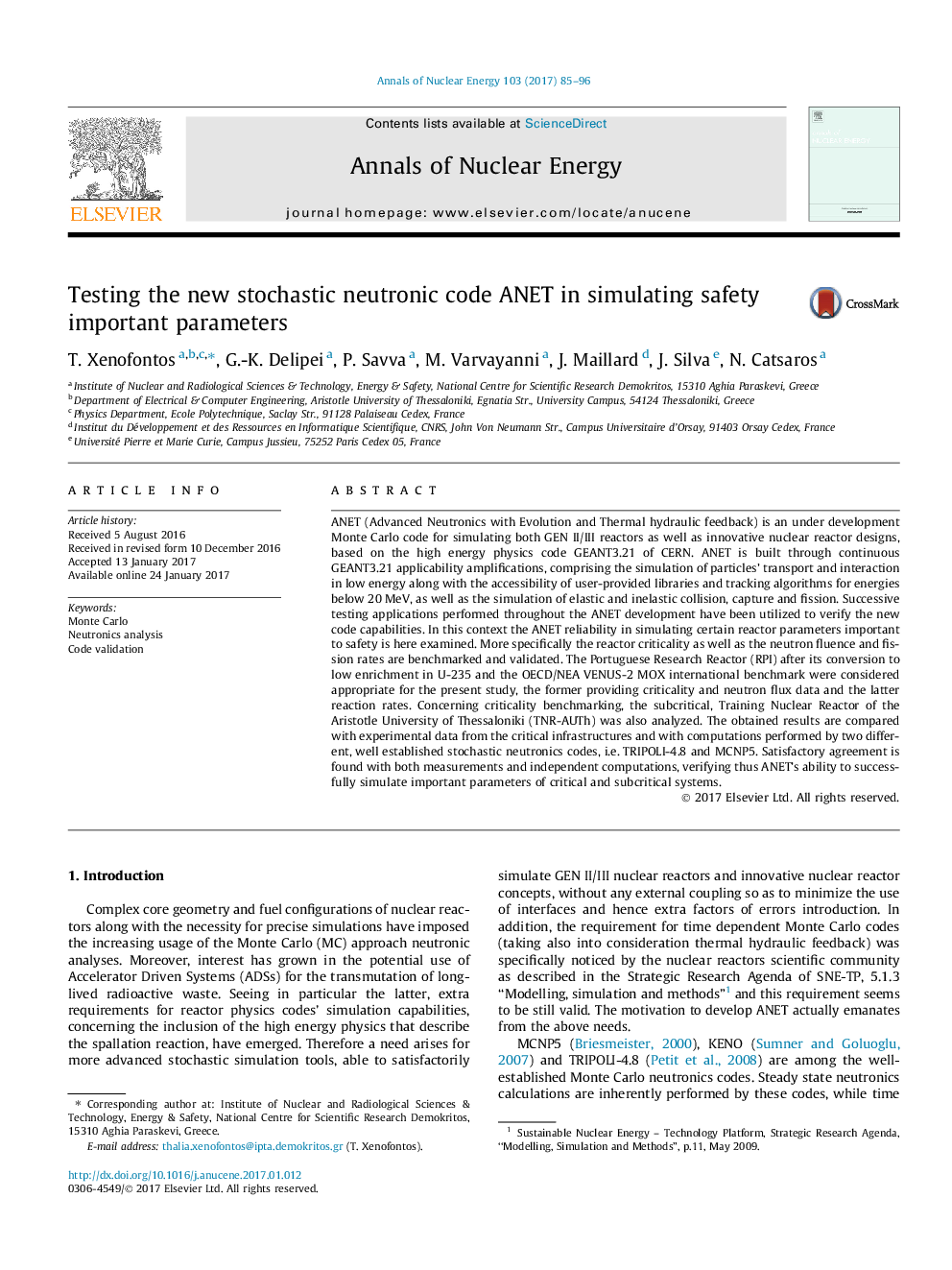| Article ID | Journal | Published Year | Pages | File Type |
|---|---|---|---|---|
| 5475207 | Annals of Nuclear Energy | 2017 | 12 Pages |
Abstract
ANET (Advanced Neutronics with Evolution and Thermal hydraulic feedback) is an under development Monte Carlo code for simulating both GEN II/III reactors as well as innovative nuclear reactor designs, based on the high energy physics code GEANT3.21 of CERN. ANET is built through continuous GEANT3.21 applicability amplifications, comprising the simulation of particles' transport and interaction in low energy along with the accessibility of user-provided libraries and tracking algorithms for energies below 20Â MeV, as well as the simulation of elastic and inelastic collision, capture and fission. Successive testing applications performed throughout the ANET development have been utilized to verify the new code capabilities. In this context the ANET reliability in simulating certain reactor parameters important to safety is here examined. More specifically the reactor criticality as well as the neutron fluence and fission rates are benchmarked and validated. The Portuguese Research Reactor (RPI) after its conversion to low enrichment in U-235 and the OECD/NEA VENUS-2 MOX international benchmark were considered appropriate for the present study, the former providing criticality and neutron flux data and the latter reaction rates. Concerning criticality benchmarking, the subcritical, Training Nuclear Reactor of the Aristotle University of Thessaloniki (TNR-AUTh) was also analyzed. The obtained results are compared with experimental data from the critical infrastructures and with computations performed by two different, well established stochastic neutronics codes, i.e. TRIPOLI-4.8 and MCNP5. Satisfactory agreement is found with both measurements and independent computations, verifying thus ANET's ability to successfully simulate important parameters of critical and subcritical systems.
Related Topics
Physical Sciences and Engineering
Energy
Energy Engineering and Power Technology
Authors
T. Xenofontos, G.-K. Delipei, P. Savva, M. Varvayanni, J. Maillard, J. Silva, N. Catsaros,
